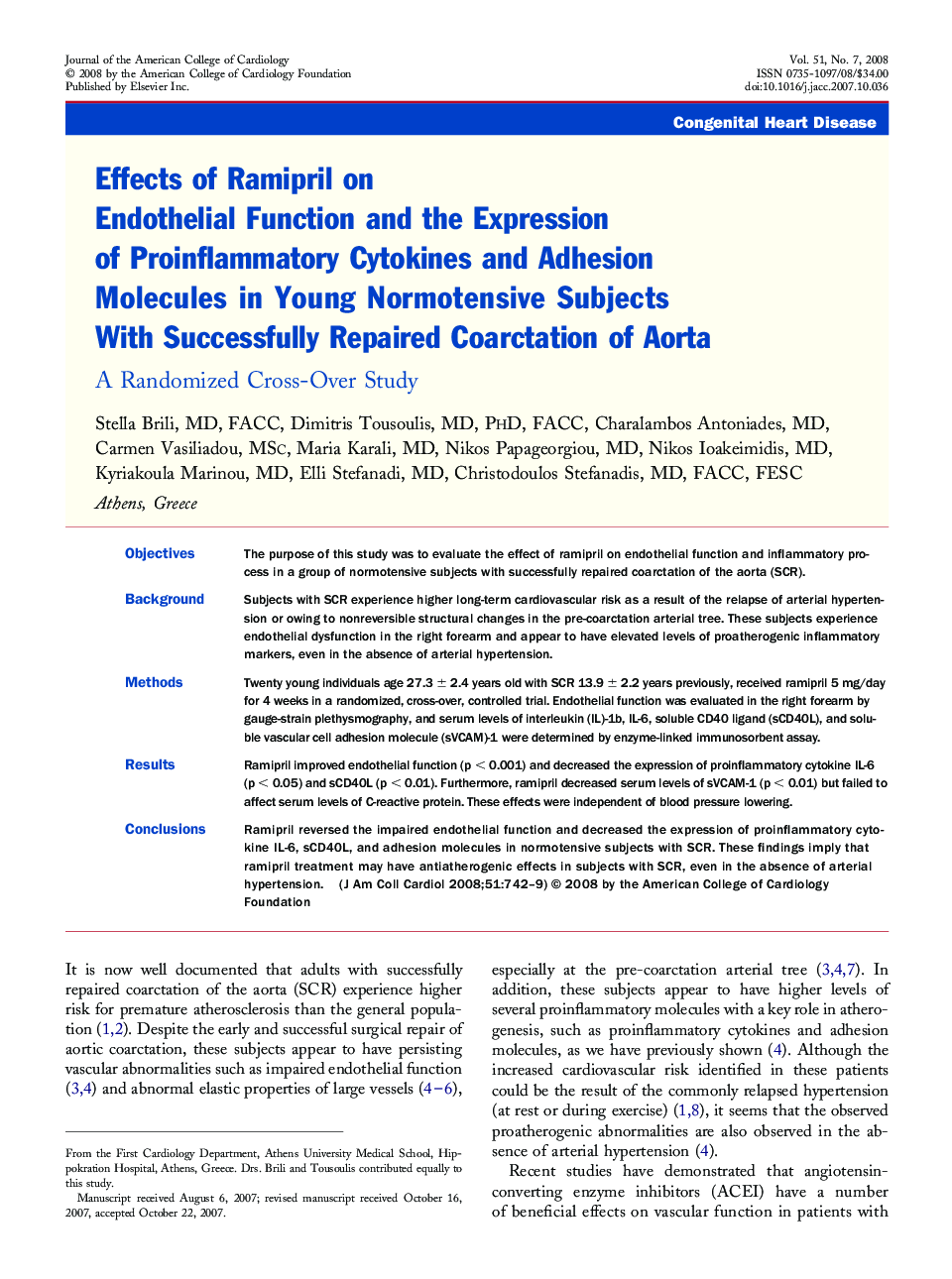| Article ID | Journal | Published Year | Pages | File Type |
|---|---|---|---|---|
| 2952721 | Journal of the American College of Cardiology | 2008 | 8 Pages |
ObjectivesThe purpose of this study was to evaluate the effect of ramipril on endothelial function and inflammatory process in a group of normotensive subjects with successfully repaired coarctation of the aorta (SCR).BackgroundSubjects with SCR experience higher long-term cardiovascular risk as a result of the relapse of arterial hypertension or owing to nonreversible structural changes in the pre-coarctation arterial tree. These subjects experience endothelial dysfunction in the right forearm and appear to have elevated levels of proatherogenic inflammatory markers, even in the absence of arterial hypertension.MethodsTwenty young individuals age 27.3 ± 2.4 years old with SCR 13.9 ± 2.2 years previously, received ramipril 5 mg/day for 4 weeks in a randomized, cross-over, controlled trial. Endothelial function was evaluated in the right forearm by gauge-strain plethysmography, and serum levels of interleukin (IL)-1b, IL-6, soluble CD40 ligand (sCD40L), and soluble vascular cell adhesion molecule (sVCAM)-1 were determined by enzyme-linked immunosorbent assay.ResultsRamipril improved endothelial function (p < 0.001) and decreased the expression of proinflammatory cytokine IL-6 (p < 0.05) and sCD40L (p < 0.01). Furthermore, ramipril decreased serum levels of sVCAM-1 (p < 0.01) but failed to affect serum levels of C-reactive protein. These effects were independent of blood pressure lowering.ConclusionsRamipril reversed the impaired endothelial function and decreased the expression of proinflammatory cytokine IL-6, sCD40L, and adhesion molecules in normotensive subjects with SCR. These findings imply that ramipril treatment may have antiatherogenic effects in subjects with SCR, even in the absence of arterial hypertension.
